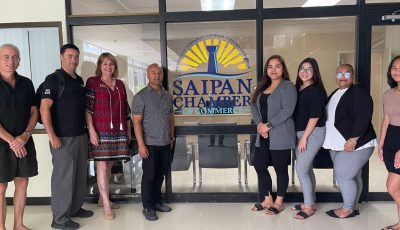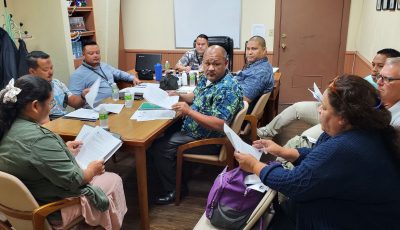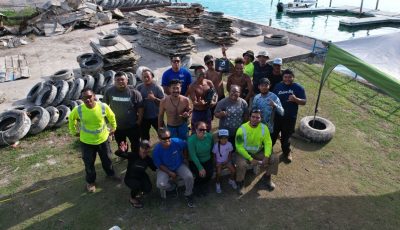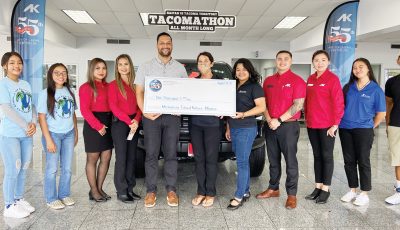MINA launches School for Environmental Conservation program
The Mariana Islands Nature Alliance launched its Schools fFor Environmental Conservation, or SFEC, for school year 2021-2022 this past Saturday, Jan. 22, at the Sunflower Hall of the Saipan World Resort, where they introduced the students to this year’s theme of “Learning About, Interacting With, and Actively Addressing Climate Change in the CNMI.”
Students will work throughout the remainder of the school year to develop and implement Conservation Action Plans that they apply specifically to their school campuses.
This year’s cohort are students and teachers from Dandan Middle School, Hopwood Middle School, Mount Carmel School, Saipan Community School, Saipan International School, Saipan Southern High School, and Tanapag Middle School.
“Science has proven that climate change is happening at a rapid pace and we need to take steps, however small, that will ensure the sustainability of our island way of life for generations to come,” said MINA executive director Roberta Guerrero in her welcoming remarks. “Today’s workshop is to introduce you to what climate change can mean for our islands and the confidence that you can make a difference.”
Tasi Watch community ranger Joseph Nekaifes presented the students with a brief history of SFEC, a dynamic program that has engaged students and teachers in environmental science for more than 10 years.
SFEC provides exposure to terrestrial and marine conservation efforts, current global and local environmental issues, and hands-on field experience and training in developing and implementing CAPs.
Ranger Selina Taitano spoke to the students about environmental stewardship, stressing our responsibility to protect and conserve our natural resources for ourselves and the future.
Presenting on “Climate Change: The Climate Crisis,” program manager Jolly Ann Cruz shed light on the reality of what other countries are experiencing due to the impacts of climate change. Cruz encouraged the youth not to despair but to be motivated as the generation that provides climate solutions. She showcased an interactive map from Climate Central–Coastal Risk Screening Tool, showing areas threatened by sea-level rise and coastal flooding, raising concern from the audience when viewing predictions for Saipan in the upcoming years that led them to think seriously about how they will be affected by climate change unless adaptive measures are taken.
Establishing cultural significance, Colleen Flores and Marlyn Naputi from the Bureau of Environmental and Coastal Quality, Division of Coastal Resources Management presented on “Climate Change in the CNMI.” Emphasizing some of the effects of climate change locally, Flores and Naputi spoke about the changing air temperatures resulting in longer and warmer seasons that cause damage to land and marine ecosystems while also affecting local harvest, hunting, and agriculture seasons.
Another alarming effect presented was about sea-level rise and how levels in the CNMI are rising at an average of 0.07 inches per year since 1978, leading to more frequent and extreme coastal erosion and flooding, threatening coastal areas, properties, and infrastructure close to shore. The impacts of ocean acidification, coral bleaching, stronger storms, and typhoons in the CNMI are real.
However, on a positive note, as mentioned by one of the participating teachers, “It is not all doom and gloom.” Flores and Naputi concluded their presentation with speaking about climate adaptation strategies and actions that we can all take to protect our environment from harmful climate impacts.
The afternoon was a working session where the participants began to design their CAPS, identifying targets that may be contributing to climate change on their school campus or at the village level, develop objectives and actions, and plans to measure their actions indicating progress towards their goals.
MINA is a non-profit 501 (c) (3) environmental conservation organization and has been serving the Marianas since 2005, fostering community and science-based conservation programs to enhance and sustain the CNMI’s environments and cultures. The SFEC program is made possible through funding by the Department of Interior, Coral Reef and Natural Resources program.
To learn more about how MINA empowers communities for conservation, visit MINA’s Facebook page, follow us on Instagram, email MINA at minaoutreach@gmail.com, or call MINA at 233-7333(REEF). (PR)



























